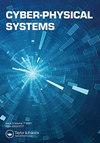Time-to-approach-based model predictive controller for autonomous vehicle safety during unexpected wheelchairs on the path
Q2 Engineering
引用次数: 0
Abstract
ABSTRACTThe objectives of this study are to (i) develop a Time-to-Approach (TTA)-based Model Predictive Controller (MPC) for an Autonomous Vehicle (AV) to safely navigate around an unexpected wheelchair on its path and (ii) develop a prediction model to forecast a wheelchair's paths and potential collisions between it and an AV. Our analyses reveal that the TTA-based MPC enhances safety by reducing collision potential between an AV and a wheelchair by 44% when compared to the traditional distance-based MPC, as measured by the lateral deviation of an AV from the potential collision location. Furthermore, our approach improves passenger comfort by an average of 62% compared to the distance-based MPC.KEYWORDS: People with disabilityAutonomous vehiclesafetynavigationmodel predictive controller AcknowledgmentsThis study is partially supported by the Center for Connected Multimodal Mobility (C2M2) (USDOT Tier 1 University Transportation Center) Grant headquartered at Clemson University, Clemson, South Carolina, USA. Any opinions, findings, and conclusions or recommendations expressed in this material are those of the author(s) and do not necessarily reflect the views of the Center for Connected Multimodal Mobility (C2M2), and the U.S. Government assumes no liability for the contents or use thereof.Disclosure statementNo potential conflict of interest was reported by the author(s).Author contributionsThe authors confirm contribution to the paper as follows: study conception and design: M. Islam, M. Chowdhury, M. Rahman, and Z. Khan.; data collection: M. Islam and Z. Khan.; interpretation of results: M. Islam, M. Chowdhury, M. Rahman, and Z. Khan; draft manuscript preparation: M. Islam, M. Chowdhury, M. Rahman, and Z. Khan. All authors reviewed the results and approved the final version of the manuscript.基于时间逼近的自动驾驶车辆安全预测控制器
摘要本研究的目的是:(i)为自动驾驶汽车(AV)开发一个基于时间到接近(TTA)的模型预测控制器(MPC),以安全绕过其路径上意外的轮椅;(ii)开发一个预测模型来预测轮椅的路径及其与自动驾驶汽车之间的潜在碰撞。我们的分析表明,与传统的自动驾驶汽车(AV)相比,基于时间到接近(TTA)的MPC通过将自动驾驶汽车与轮椅之间的碰撞可能性降低44%来提高安全性基于距离的MPC,通过自动驾驶汽车与潜在碰撞位置的横向偏差来测量。此外,与基于距离的MPC相比,我们的方法平均提高了62%的乘客舒适度。本研究得到了互联多模式交通中心(C2M2)(美国交通部一级大学交通中心)资助的部分支持,该中心总部位于美国南卡罗来纳州克莱姆森大学。本材料中表达的任何观点、发现、结论或建议均为作者的观点,并不一定反映互联多式联运中心(C2M2)的观点,美国政府对其内容或使用不承担任何责任。披露声明作者未报告潜在的利益冲突。作者对本文的贡献如下:研究概念和设计:M. Islam, M. Chowdhury, M. Rahman和Z. Khan;数据收集:M. Islam和Z. Khan;结果解释:M. Islam, M. Chowdhury, M. Rahman, Z. Khan;草稿准备:M. Islam, M. Chowdhury, M. Rahman和Z. Khan。所有作者审查了结果并批准了手稿的最终版本。
本文章由计算机程序翻译,如有差异,请以英文原文为准。
求助全文
约1分钟内获得全文
求助全文

 求助内容:
求助内容: 应助结果提醒方式:
应助结果提醒方式:


